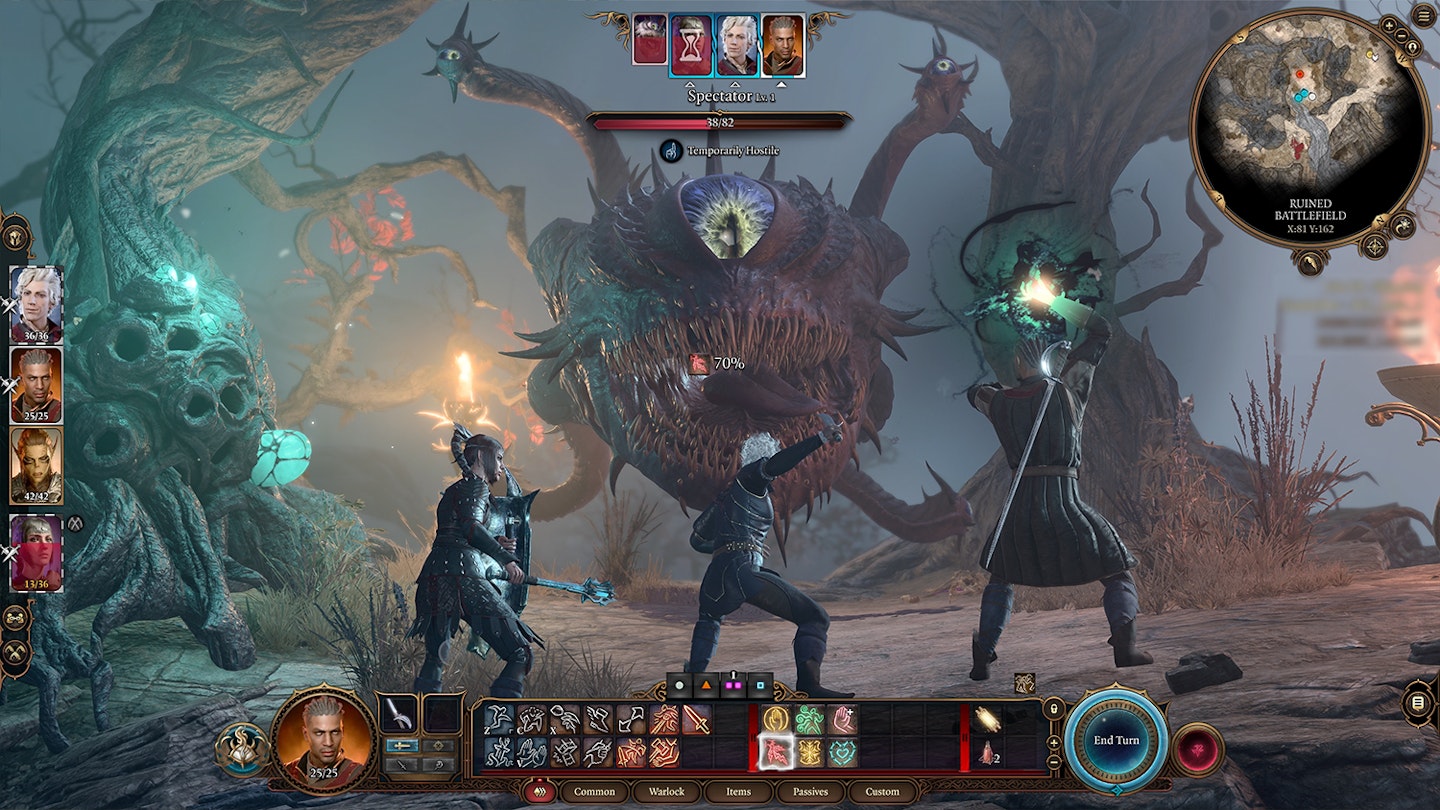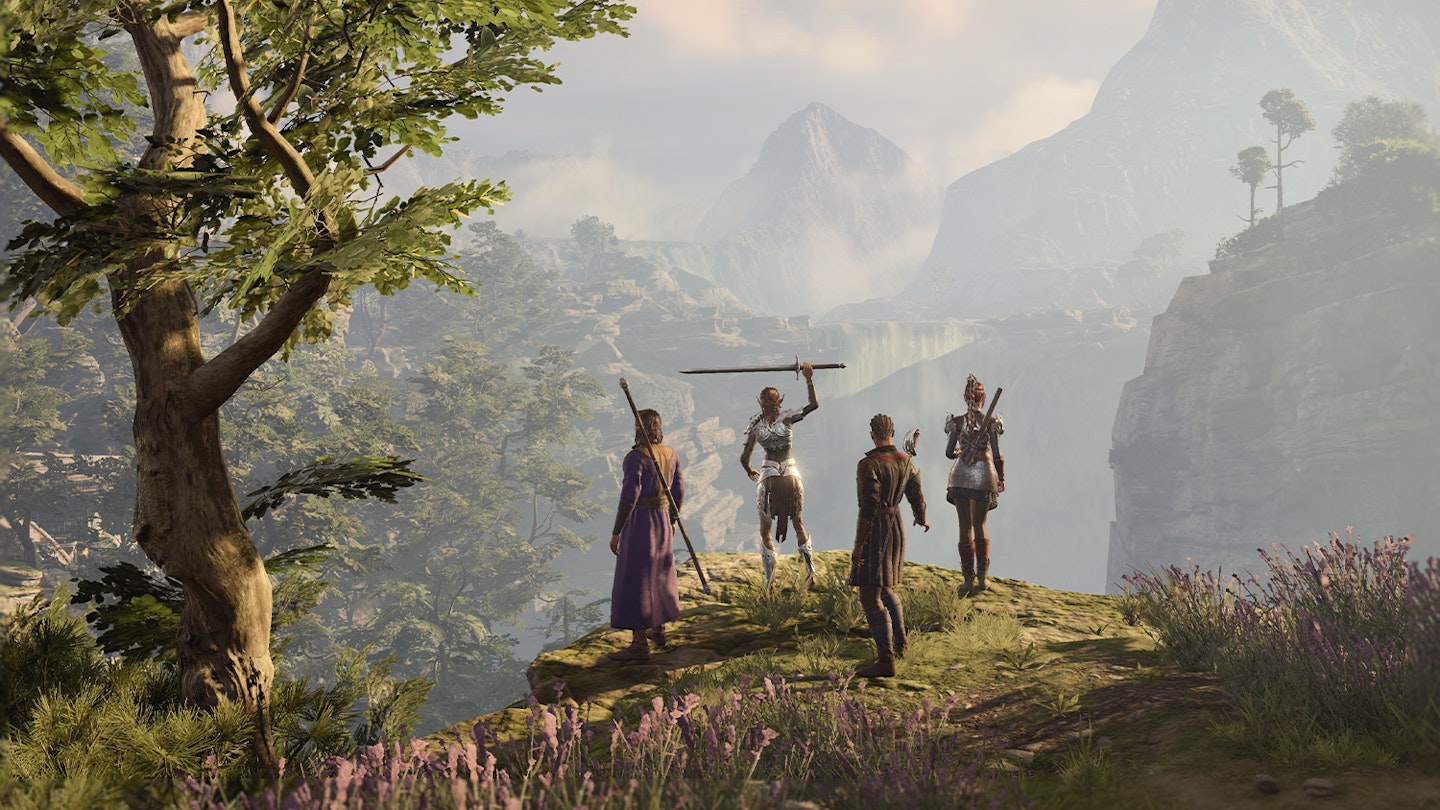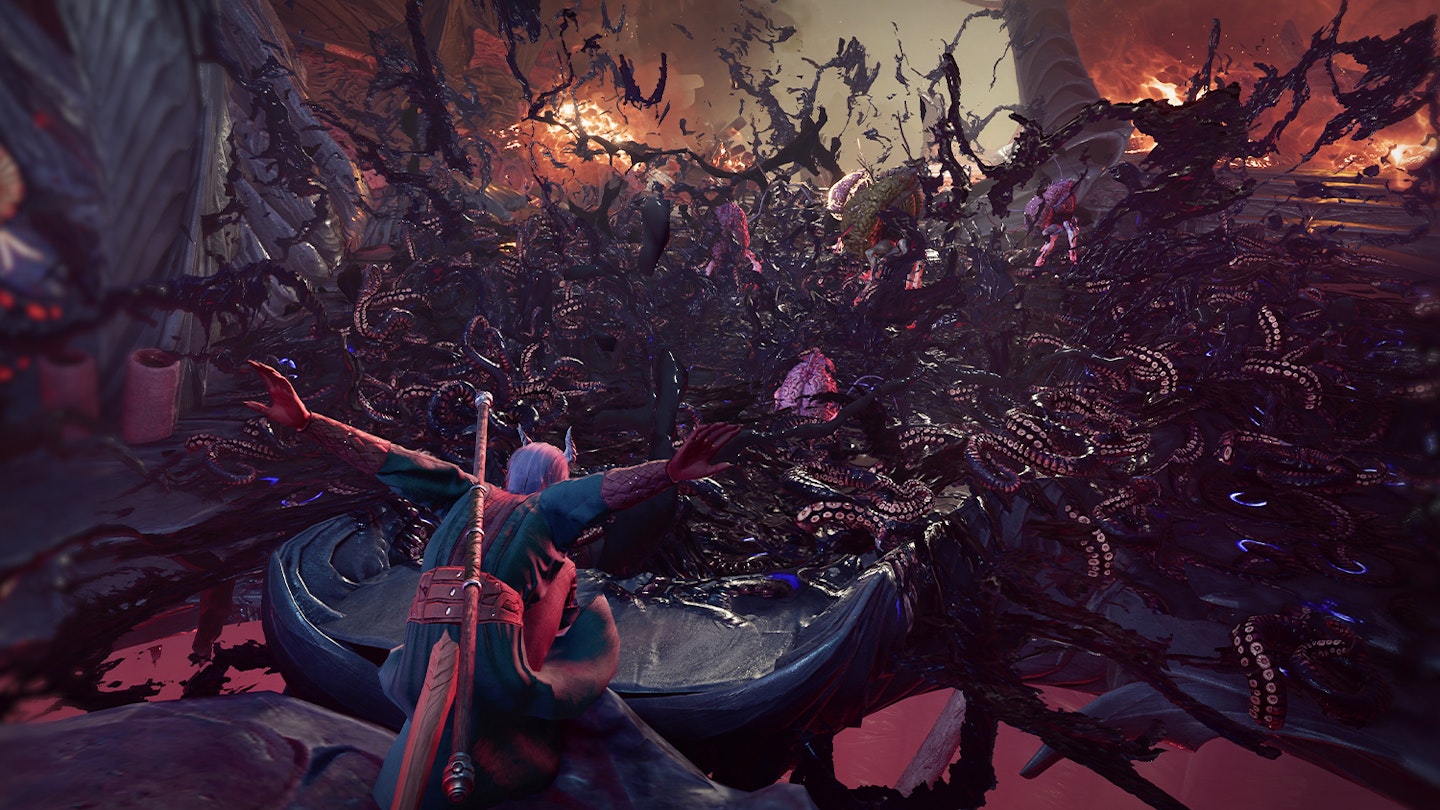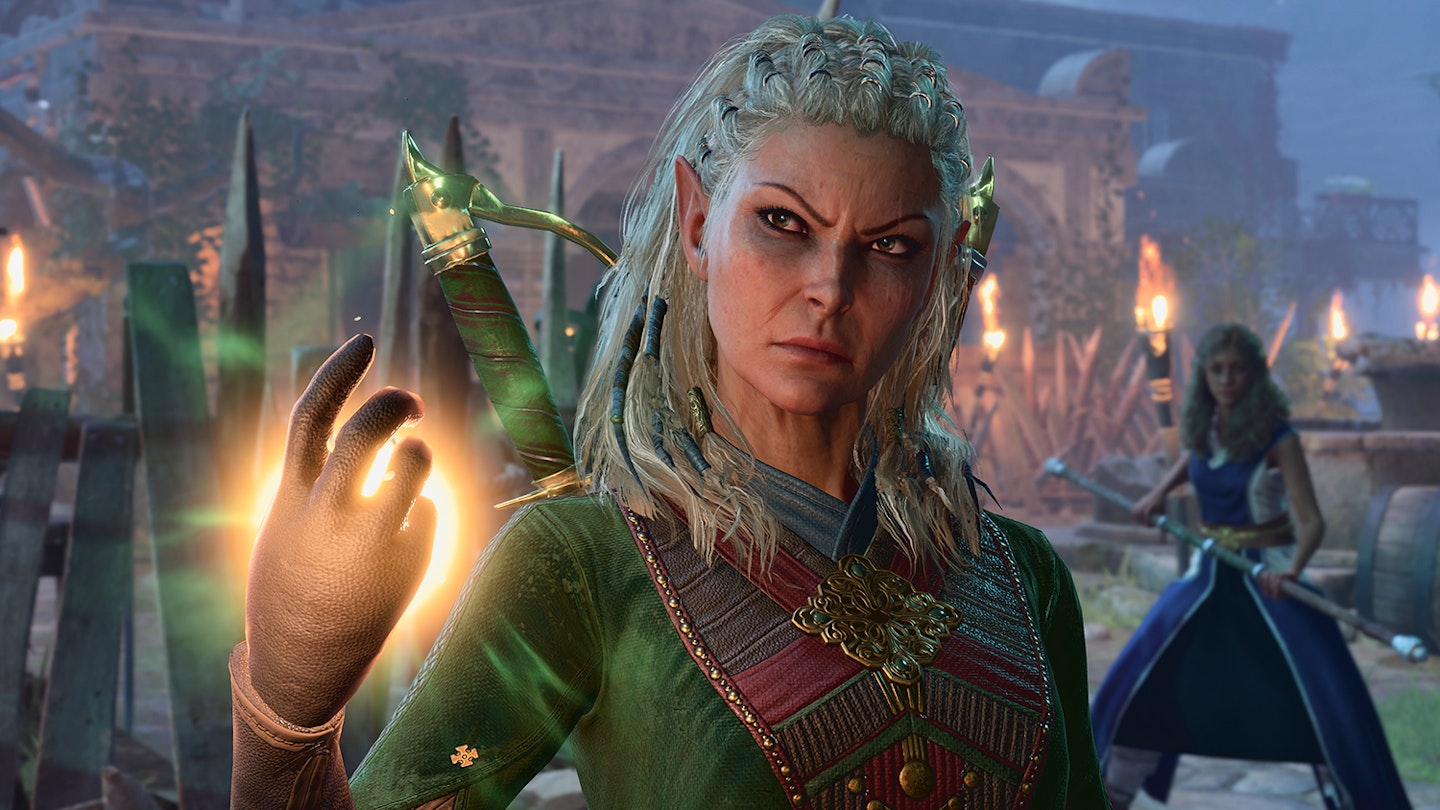Platforms: PS5, PC
It's safe to say Dungeons & Dragons is having a moment lately. Between providing the backdrop for Stranger Things, a surprisingly good Hollywood outing with this year’s Dungeons & Dragons: Honour Among Thieves, and some outrageously successful YouTube shows, rolling d20s has never been so popular – and Baldur's Gate III continues that upwards trend.
Set in wider D&D continuity, you’ll start by escaping from the squid-headed Mindflayers – all while infected with a parasite threatening to turn you into one of them. Searching for a cure, you’re soon drawn into a labyrinthine epic against a trio of menacing antagonists – necromancer General Thorm, scheming politician Lord Gortash, and psychotic shapeshifter Orin the Red (J.K. Simmons, Jason Isaacs, and Maggie Robertson, respectively, all delivering fantastic performances).

Exactly who your hero is can drastically change the course of the game, though. Alongside a spectacularly detailed character creator allowing you to blend races, classes, physical attributes, and more from D&D's multitudinous options are seven Origin characters – pre-made protagonists with their own backgrounds and agendas. Standouts include Shadowheart, a haughty half-elf straight out of Mean Girls; Astarion, a high elf rogue who's (supposedly) kicked old vampiric habits; and Karlach, a demonic barbarian escaped from hell who just wants to find love – and vengeance. Thankfully, these pivotal figures can become companions if not actively played, so you'll still get to experience their stories without multiple playthroughs.
That's a minor blessing, as Baldur's Gate III almost has too much content for even a single run. Developer Larian boasts 174 hours of cinematics alone (thankfully, that figure is reached via some creative accounting, as it includes variant scenes that differ depending on choices made or characters present), while every problem has numerous outcomes, splintering paths into near-infinite directions.
For instance, on a first playthrough, shortly after escaping the crashed nautiloid ship that you initially wake up on, we found a locked door to an ancient vault. Failing a skill check to lockpicking, there was no choice but to move on, soon meeting Gale, a wizard and fellow Mindflayer escapee who joins up with you. In a later pass though, we succeeded in picking the lock, revealing a mausoleum dedicated to a dead god, filled with loot, an important side character, and a battle against undead librarians. Fighting our way through to a hidden exit on the other side, we then encountered a bunch of thieves trying to raid a different tomb, and the path splintered further with various options of how to approach.(Attack them from afar? After all, two of them are arguing right under an abandoned counterweight that could take them out with a well-placed fire bolt to its supporting rope… Or maybe intimidate them into leaving the site, allowing you to raid its treasures instead? Charming them to win their favour could work too…)

Whatever you choose, the story warps, morphs, adapts; new routes and outcomes come into being in real time, mutating the shape of not just the current quest, but the game as a whole. There are characters you may never meet (or, if you're an unlucky thief under a cinderblock, may kill off before meeting them, cutting off any possible later encounters) or quests you never unlock. A seemingly innocent dialogue choice may royally piss off a party member, affecting how they react to you at a pivotal moment later. It's inconceivable you'll ever see all that Baldur's Gate III has to offer, but that's part of the beauty – it's a completely different experience for each and every player.
While that may be no huge surprise to anyone who played the similarly divergent original Baldur's Gate games, this isn't just more of the same, albeit in current-gen quality. Perhaps the biggest change Larian has brought about is a shift to turn-based combat, a first for the series. While it's all underpinned by D&D's tabletop Fifth Edition ruleset, don't worry if you've not memorised the pen-and-paper game's arcane systems.
At its simplest here, you'll position each character on their turn, then choose what action to take. It's easy enough to grasp without having to worry about stat modifiers or the series' typical number wrangling, but for those who do know (or care) about the difference between a spell and a cantrip, or how a +1 to attack can turn the tide of battle, there's plenty of depth and specificity to be found in combat. As you get to grips with the game, you'll begin to pick out how you can make use of turn order, or bonus actions, or environmental attacks to better dominate each encounter. Throwing some grease on the ground, then setting it on fire, then dipping a weapon in that fire is a great way to control the battlefield and enhance your attacks, for example.

Instead of throwing an endless stream of numbers at you in combat, the stats side of D&D is found in those aforementioned skill checks that kick in at pivotal branching moments. Whether it's picking a lock, disarming a trap, investigating a suspicious monument, or even making certain dialogue choices, you'll click a digital d20 to roll against a relevant skill. Any modifiers available – items or skills that improve or worsen the score – are immediately factored in. Roll high enough to meet the requirements and you'll unlock it. Fail, and you'll have to come up with another solution for the particular problem, or live with the consequences. It's a great approach, making the nerdy skill checks visual and intuitive, while making combat less dominated by unseen background numbers.
If there's a downside to Baldur's Gate III, it's the decidedly sub-par joypad controls. You can almost imagine Larian grumbling at having to add the control scheme in for the PS5 release, all the while cursing the lack of an official mouse for Sony's behemoth of a console (then, even more grudgingly, porting those controls back to the PC version as an option). There are parts that work: chiefly, moving your character around the world with the DualSense thumbstick feels far more natural than constantly clicking or holding the left mouse button to direct them to a particular spot on PC, while also manually moving the camera to track them. However, the rest of the controls get mapped to a multitude of radial dials, which is far from intuitive – panning back and forth between them trying to find the particular skill or action you want to use can be a slightly frustrating chore. But given the sheer volume of spells and abilities on offer for your various characters, it's hard to see what an obvious alternative might have been.
While its sheer scale may also be a shade daunting to newcomers to this particular style of RPG, Baldur’s Gate III offers a truly epic experience like almost no other, one packed with meaningful choices at every turn. Like a great Dungeon Master leading an epic tabletop role-playing session, Larian ensures everything here exists in service to storytelling, to allowing players to carve their own path through the world. Even the smallest decisions – whether to kill a monster, free a prisoner, or to join up with a handsome but obviously shady wizard – can have meaningful consequences, and failure at any point can often lead to something even more interesting. Forget the genre’s tendency for stat-wrangling and juggling numbers – it’s in that unrivalled freedom that Baldur’s Gate III earns its place as an RPG for the ages. A modern masterpiece.
